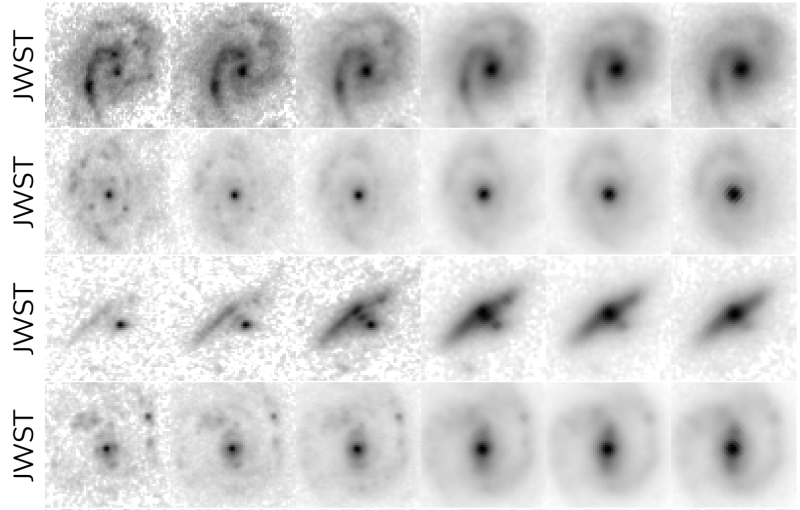James Webb Space Telescope reveals ancient galaxies were more structured than scientists thought
"Based on our results astronomers must rethink our understanding of the formation of the first galaxies and how galaxy evolution occurred over the past 10 billion years."

What did galaxies in the early universe look like? Surprisingly close to our own Milky Way, according to the latest findings from the James Webb Space Telescope (JWST), whose unprecedented infrared eye has been rewriting what we thought we knew about the early universe.
Astronomers have long thought that newly minted galaxies that began merging together just after the Big Bang, about 13.7 billion years ago, were too fragile to boast any noticeable structures like spiral arms, bars or rings. Those galactic features were thought to form during a time at least six billion years after the Big Bang. According to the new study, however, these delicate shapes could've manifested as early as 3.7 billion years after the Big Bang — which is almost at the beginning of the universe.
"Based on our results astronomers must rethink our understanding of the formation of the first galaxies and how galaxy evolution occurred over the past 10 billion years," Christopher Conselice, an astronomy professor at The University of Manchester in the U.K. and a co-author of the new study, said in a statement published Friday (Sept. 22).
Related: James Webb Space Telescope sees early galaxies defying 'cosmic rulebook' of star formation
The new findings come at the heels of another announcement presented by a different group of researchers, also based on JWST data, which showed these early galaxies produced far fewer heavy elements than previously expected. However, the relationship between a galaxy's chemical composition and its evolution into a well-defined structure is not very well understood.
Much of scientists' previous understanding on galaxy evolution came from data gathered by the Hubble Space Telescope (HST), which is legendary in its own right but still has only so much resolution. While the HST data showed early galaxies had irregular shapes (as was expected during galaxy mergers) higher resolution data from the JWST is peering deeper into the universe to reveal that those early galaxies actually had well-defined structures like our own Milky Way. The new findings were based on an analysis of 3,956 galaxies, which astronomers say is the biggest sample that has been studied thus far with JWST data.
"For over 30 years it was thought that these disk galaxies were rare in the early universe due to the common violent encounters that galaxies undergo," Leonardo Ferreira, an astrophysicist at the University of Victoria in Canada and the lead author of the new study, said in the same statement. "The fact that JWST finds so many is another sign of the power of this instrument and that the structures of galaxies form earlier in the Universe, much earlier in fact, than anyone had anticipated."
Breaking space news, the latest updates on rocket launches, skywatching events and more!
According to the new study, the team classified the sample set of close to 4,000 galaxies from the early universe by shape — like disks, point sources and spheroids. Team members further classified them as smooth or structured, with galaxies in the latter group featuring bursts of star formation and indications of mergers with other galaxies.
Results showed that relatively well-defined structures in the universe form a lot quicker than previously thought, following what is known as the Hubble Sequence, which is the standard classification of galaxies by their visual properties as ellipticals, lenticulars and spirals.
The latest findings suggest a need for new ideas that explain how galaxies evolved over the past 10 billion years.
This research is described in a paper published Sept. 22 in The Astrophysical Journal.

Sharmila Kuthunur is an independent space journalist based in Bengaluru, India. Her work has also appeared in Scientific American, Science, Astronomy and Live Science, among other publications. She holds a master's degree in journalism from Northeastern University in Boston.
